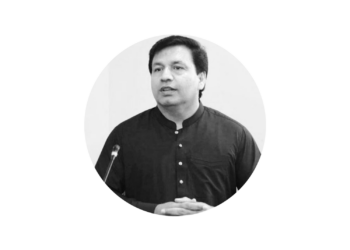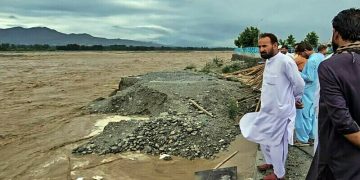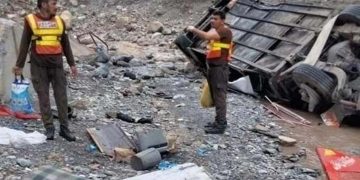Ukraine has long played an important, yet sometimes overlooked, role in the global security order. Today, the country is on the front lines of a renewed great-power rivalry that many analysts say will dominate international relations in the decades ahead. Russia’s invasion of Ukraine in February 2022 marked a dramatic escalation of the eight-year-old conflict that began with Russia’s annexation of Crimea and signified a historic turning point for European security. A year after the fighting began, many defense and foreign policy analysts cast the war as a major strategic blunder by Russian President Vladimir Putin. Ukraine was a cornerstone of the Soviet Union, the archrival of the United States during the Cold War. Behind only Russia, it was the second-most-populous and -powerful of the fifteen Soviet republics, home too much of the union’s agricultural production, defense industries, and military, including the Black Sea Fleet and some of the nuclear arsenal. Ukraine was so vital to the union that its decision to sever ties in 1991 proved to be a coup de grace for the ailing superpower. NATO condemns in the strongest possible terms Russia’s brutal and unprovoked war of aggression against Ukraine which is an independent, peaceful and democratic country, and a close NATO partner. NATO and Allies continue to provide Ukraine with unprecedented levels of support, helping to uphold its fundamental right to self-defense. In its three decades of independence, Ukraine has sought to forge its own path as a sovereign state while looking to align more closely with Western institutions, including the EU and NATO. However, Kyiv struggled to balance its foreign relations and to bridge deep internal divisions. A more nationalist, Ukrainian-speaking population in western parts of the country generally supported greater integration with Europe, while a mostly Russian-speaking community in the east favored closer ties with Russia.
Today, the NATO-Russia relationship is deep in crisis. After war broke out between Russia and Georgia in South Ossetia, NATO suspended all joint activities with the Russians. Before long, both sides were accusing the other of returning to Cold War tactics and making long lists of policy grievances linked not just to the recent Russia-Georgia conflict but to their entire relationship over the better part of the last two decades. For the Russians, NATO enlargement – from the first round in 1999 to the debate about Georgia and Ukraine in the spring of 2008 – remains their chief complaint. U.S. plans to install a missile defense system in Poland and the Czech Republic is another sore point. For NATO and the West more broadly, Russia’s behavior towards its neighbors, particularly Georgia and Ukraine but also the Baltic States and the countries of Central and Eastern Europe, has spurred a steady stream of heated accusations about Russian hegemony. Since Russia began its aggressive actions against Ukraine, Russian officials have accused NATO of a series of threats and hostile actions. NATO has taken defensive and proportionate steps in response to a changed security environment. In response to Russia’s use of military force against its neighbors, Allies requested a greater NATO presence in the Baltic region. In 2016, we deployed four multinational battle groups or “enhanced forward presence” to Estonia, Latvia, Lithuania and Poland. In 2017, the battle groups became fully operational. More than 4,500 troops from Europe and North America work closely together with home defense forces. NATO’s presence in the region is at the request of the host nations, and Allied forces uphold the highest standards of conduct, both on and off duty. As part of NATO Allies’ commitment to transparency, Estonia, Latvia and Lithuania host Russian arms control inspectors. In Estonia, for instance, Russian inspectors recently conducted a Vienna Document Inspection, observing parts of exercise Spring Storm in May and June 2021.
NATO ballistic missile defense is not directed against Russia and cannot undermine Russia’s strategic deterrence capabilities. It is designed to protect European Allies against missile threats from outside the Euro-Atlantic area. NATO invited Russia to cooperate on missile defense, an invitation extended to no other partner. Unfortunately, Russia refused to cooperate and rejected dialogue on this issue in 2013. Russian statements threatening to target Allies because of NATO’s ballistic missile defense are unacceptable and counterproductive. NATO has reached out to Russia consistently and publicly over the past 30 years. We worked together on issues ranging from counter-narcotics and counter-terrorism to submarine rescue and civil emergency planning – even during periods of NATO enlargement. However, in 2014, in response to Russia’s aggressive actions against Ukraine, NATO suspended practical cooperation with Russia. We do not seek confrontation, but we can’t ignore Russia breaking international rules, undermining our stability and security.
NATO enlargement is not directed against Russia. Every sovereign nation has the right to choose its own security arrangements. This is a fundamental principle of European security, one that Russia has also subscribed to and should respect. In fact, after the end of the Cold War, Russia committed to building an inclusive European security architecture, including through the Charter of Paris, the establishment of the OSCE, the creation of the Euro-Atlantic Partnership Council, and the NATO-Russia Founding Act. For decades, the United States has had nuclear weapons on the territory of some European NATO members as part of NATO’s deterrence and defense capabilities. These weapons remain under the custody and control of the United States at all times. Furthermore, NATO’s nuclear arrangements predate the NPT. They were fully addressed when the treaty was negotiated. It is Russia that is using its nuclear weapons as a tool of intimidation. Russia uses irresponsible nuclear rhetoric and has stepped up its nuclear exercises. Russia is also expanding its nuclear capabilities by investing in novel and destabilizing weapons. This activity and this rhetoric do not contribute to transparency and predictability, particularly in the context of a changed security environment. Every nation has the right to conduct exercises, but it is important that they are conducted transparently and in line with international obligations. To promote transparency, members of the OSCE, including Russia, commit to follow the provisions of the Vienna Document. If an exercise involves at least 9,000 personnel, it is subject to notification, and if it equals or exceeds 13,000 personnel, observers from OSCE states must be invited to attend the exercise. NATO’s concerns about Russian exercises are a direct result of Russia’s lack of transparency. Since the end of the Cold War, Russia has never opened an exercise to mandatory Vienna Document observation. Russia has also used large snap exercises, including with tens of thousands of troops, to intimidate its neighbors. This practice raises tension and undermines trust. Russia’s intervention in Georgia in 2008 and illegal annexation of Crimea in 2014 were masked by snap exercises.






























